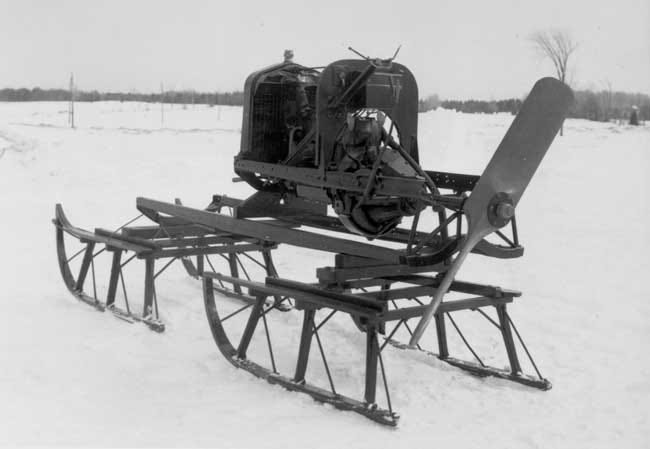Innovation of the Species
The time price of a new Polaris snowmobile is 60 percent less than the 1958 model
Polaris introduced the Sno-Traveler in 1957. The two-cylinder 12.9 horsepower model with electric start sold for $1,250. Blue-collar workers were earning around $2.24 an hour in 1957. This would put the time price at 558 hours. Today you can buy a new 55 horsepower Indy EVO model for $7,999. Blue-collar hourly compensation is closer to $36.15 putting the time price at 221 hours. The time price has fallen over 60 percent. Today your time will get you 2.52 Indys for the time price of one Sno-Traveler in 1957.
Snowmobiles today are faster, safer, and more comfortable, powerful, and reliable than any time in history.
In 1945 Edgar Hetteen, his brother Allan, and friend and brother-in-law David Johnson were partners in Hetteen Hoist & Derrick Co. in Roseau Minnesota. David Johnson wanted something to make it easier to go out in the snow to a cabin or hunt in the winter. The prototype snowmobile was created in 1954 and was built using sheet metal, a grain conveyor belt, a cut in half car front bumper for skis, and powered by a Briggs & Stratton engine. They decided to start manufacturing in 1957 and built 75 units. In 1960 Edgar promoted the new innovation by making a 1,200 mile trek across Alaska. Thus was born the snowmobile industry and winter snow was transformed from a liability to an asset.
Around the same time a 51-year old Canadian named Joseph Bombardier was developing and building his own version of the Snowmobile, called the Ski-Doo.
A little background on Bombardier
Bud Gordon has noted, at the age of fifteen J.-Armand, as he was known, was a tinkerer who had a habit of taking the family car apart. To divert his son’s attention his father bought him an old Model T to work on.
J.-Armand and his younger brother mounted the Model T engine to a framework on sleigh rails and used a propeller to drive the machine. With only a rope to steer the strange-looking sleigh, and no brakes to stop it, the boys sped across the yard in sight of their horrified father.
The Musée de l’ingéniosité J. Armand Bombardier (Museum of Ingenuity) in Valcourt, Quebec, Canada notes that during the winter of 1934, when Bombardier was 27, his two-year-old son fell gravely ill with peritonitis during a severe snowstorm. Bombardier was unable to get his son to the nearest hospital due to the heavy snowfall and the lack of reliable transportation options. Despite his desperate efforts, his son passed away before he was able to receive medical attention. This heartbreaking experience left a lasting impression on Bombardier and fueled his determination to find a solution to the transportation challenges caused by harsh winter conditions. In 1935, just one year after his son's death, Bombardier unveiled his first snowmobile, which he called the B7. It was a revolutionary invention that featured a unique track and propulsion system, allowing it to navigate through deep snow and icy terrains.
In addition to his work in the snowmobile industry, Bombardier also developed the world's first fully automatic transmission for cars and pioneered the use of rubber tracks in heavy-duty vehicles.
Comparing today’s snowmobiles to their 1950s predecessors is like comparing a Model T Ford to a Corvette. Continuous design improvements and free markets where new ideas can be tested have put snowmobiles on a geometric learning curve. The 66-year Polaris-Ski-Doo competition has been great for customers. If you have never ridden a snowmobile it is truly an exhilarating experience. Your appreciation of snow and the great outdoors in the wintertime will never be the same.
We describe the process of “innovating our capitals” in our new book, Superabundance, available at Amazon. There has never been a better time to discover and share valuable new knowledge.
Gale Pooley is a Senior Fellow at the Discovery Institute and a board member at Human Progress.











